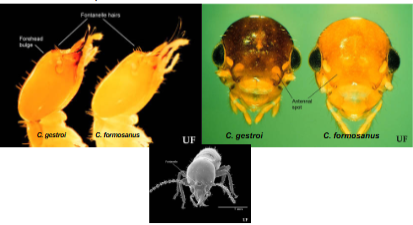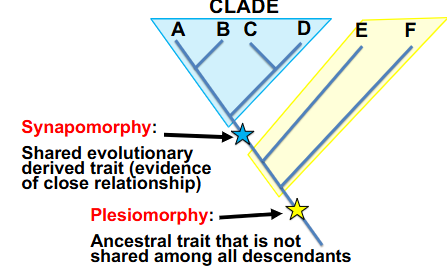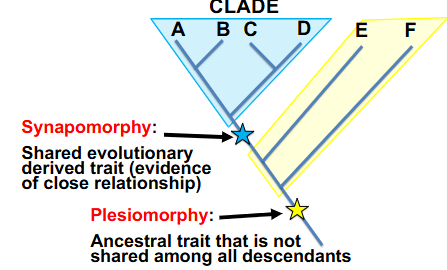ENTM100 Lecture 15 Systematics
1/31
There's no tags or description
Looks like no tags are added yet.
Name | Mastery | Learn | Test | Matching | Spaced |
|---|
No study sessions yet.
32 Terms
Biological species concept
Main criterion: Interbreeding (natural populations)
Also: reproductively isolated from other groups
Species
Morphological species concept
Biological species concept
Evolutionary species concept
Phylogenetic species concept
Cohesion species concept
Systematics
study of biodiversity and the relationships among groups of organsims (taxa)
Systematics
Taxonomy
Phylogenetics
Both contribute to: Species delimitation
Taxonomy
Science of recognizing, describing, and naming taxa and classifying organsims into groups
Phylogenetics
Study of evolutionary history and relatedness
Species delimitation (systematics)
Study of species boundaries
What criterias can you use to evaluate multiple character traits to help diagnose species
DNA
Morphology
Reproduction
ecology
Geography
DNA
Characters
Morphological characters
Physiological characters
Ecological characters
Ethological characters
Geographical characters
Molecular characters
Morphological characters (characters)
Think: What does insect look like?
Consider:
body type
wings
leg types
mouthparts
antennal types
Reproductive organs
Physiological characters
What does it look like
How does the inside of the insect work?
Metabolsim
Muscles
Chemistry
Secretions
Physiological character: Cuticular hydrocarbon
Cuticular hydrocarbon (physiological characters / char)
Prevents dessication
Mating cues
(think about how cuticular is around membrane in plants and plants need water so yeah)

Coptotermes formosanus and coptotermes gastroi
Both species can be found in Taiwan and southern China
Both species can be found in Hawaii
Ecological characters (characters)
How does the insect live in its environment?
Habitat, food, parasites, what eats it.
Ethological characters (behavior)
Territories, aggression, mate recognition, courtship
(Behavioral information)
Geographical characters
Where in the world is it found?
Molecular characters
How does its DNA compare to that of other organisms?
Phylogenetics
Enables us to uncover the origin, diversification, evolution, and biogeography (distributions both past and present) of taxa
Provide us with a better understanding of evolution and genomics
Phylogenetic trees
Phylogenetic trees (phylogenetics)
not restricted to only showing divergencies between taxa
Can be used to investigate gene evolution
Taxa (phylogenetic trees)
tips of trees
Monophyletic group
ancestor and all descendents
Cladistics
one approach to phyloegenetics
Goal: infer phylogenies using patterns of similarity, based on shared, evolutionarily novel features

Synapomorphies
Shared evolutionary novel features.
Evidence that taxa are closely related
(shared derived trait)

Plesiomorphies
Evolutionary features are not shared… not closely related
Ancestral traits
Ancestral trait that is not shared among all descendents
Characters
used to help us classify taxa
characters are unique features that are useful for recognizing taxa
Grouping taxa
Group based on homologous character
Homologous characters
share an origin in a common ancestor
serve as synapomorphies that define evolutionary groups
(Synapomorphies are homologous characters)
3 tests to tell whether a character/trait is homologous
Similarity
Congruence
Conjunction
Similarity (test)
Does the character being compared across taxa occur in the same location on the insect and develop the same way
Homologous characters do both
Same location on insect and develop in same way?
Congruence (test)
Does the character of interest serve as a synapomorphy
Does the synapomorphy define a grouping that is supported by other character data?
Homologous characters do.
Common synapomorphies in other character data?
Conjunction
Does character exhibit two states on the same individual
Homologous characters DO NOT.
Character exhibit two different states in the same individual
Conjecture
interpretation of character states
(rather than well0defined taxa, etc.)